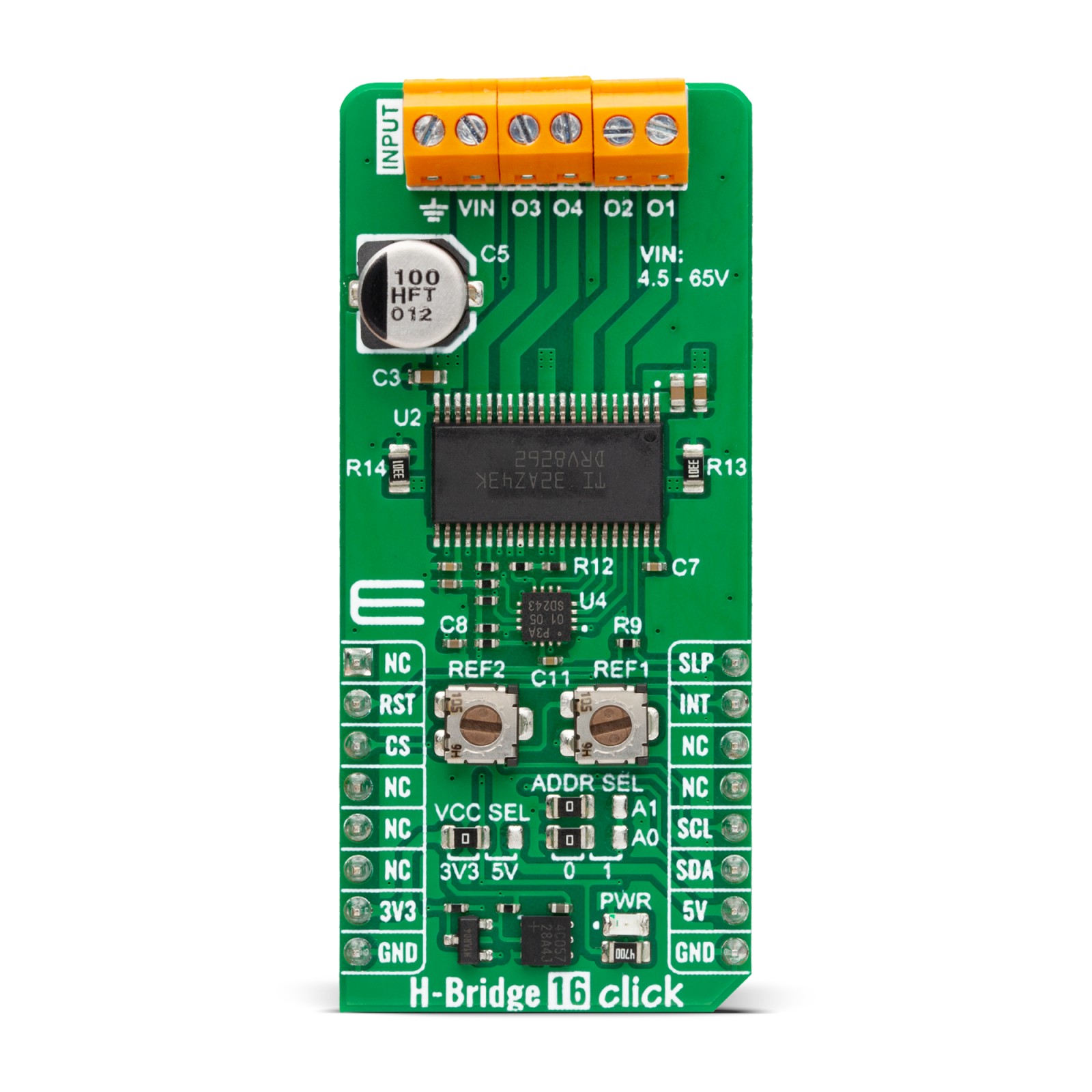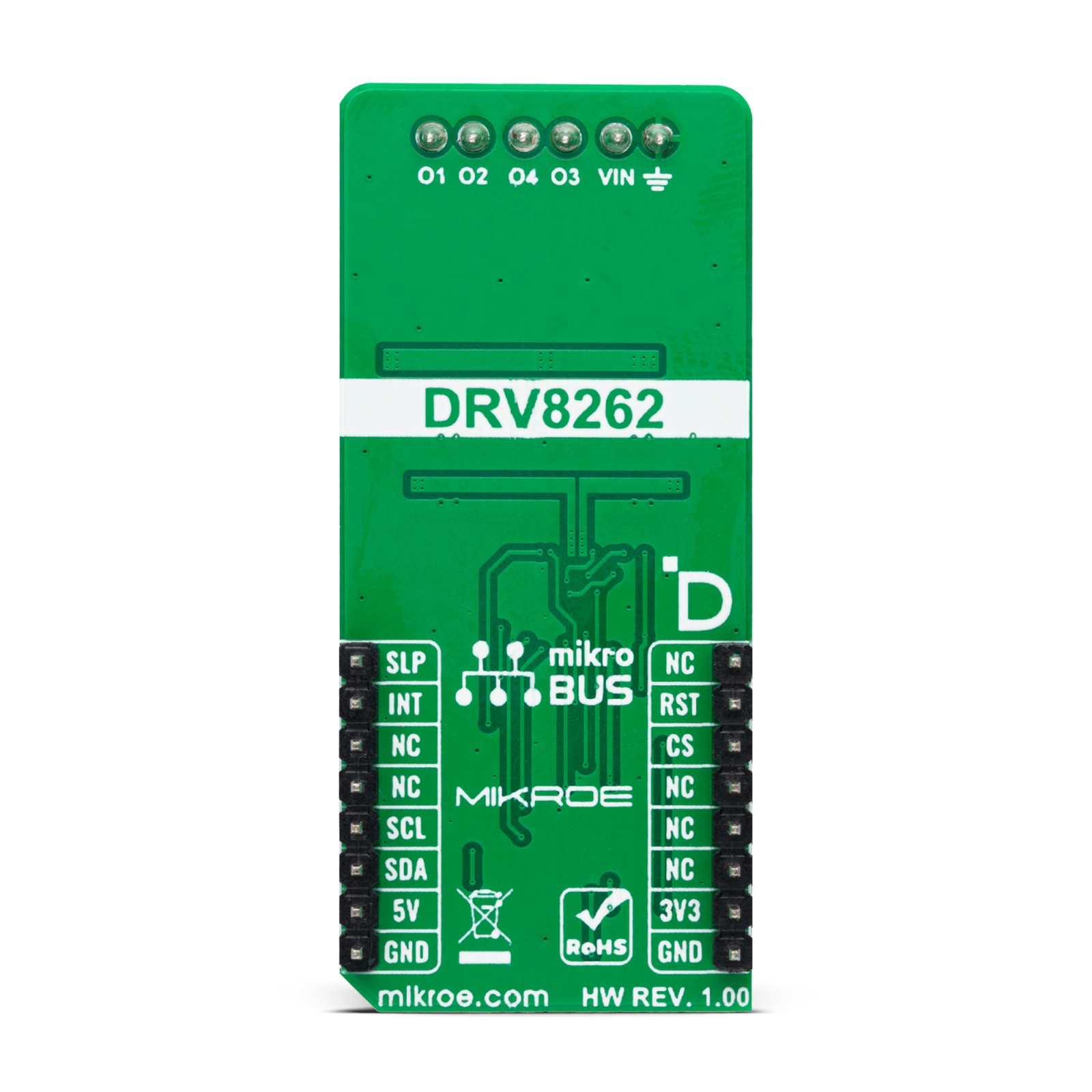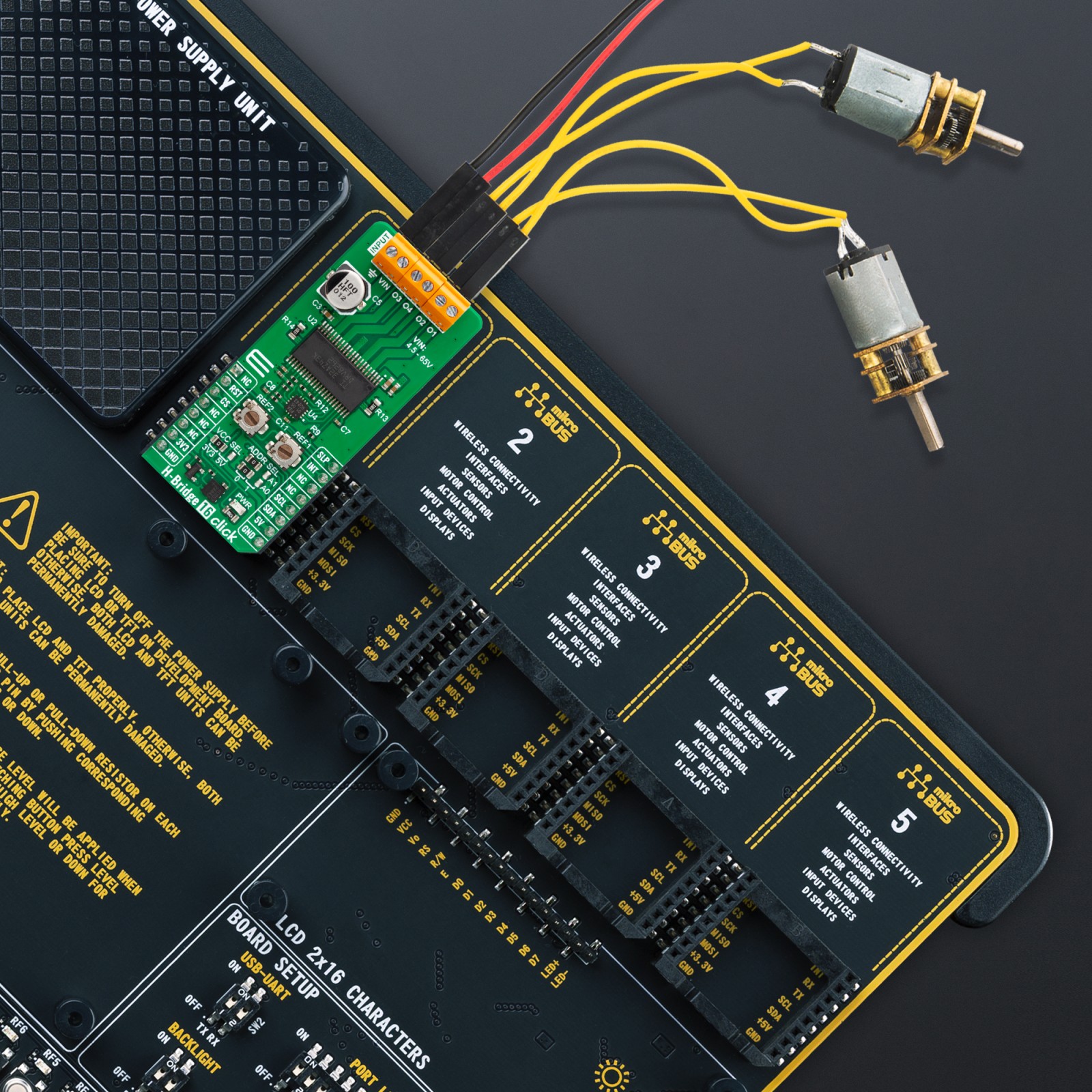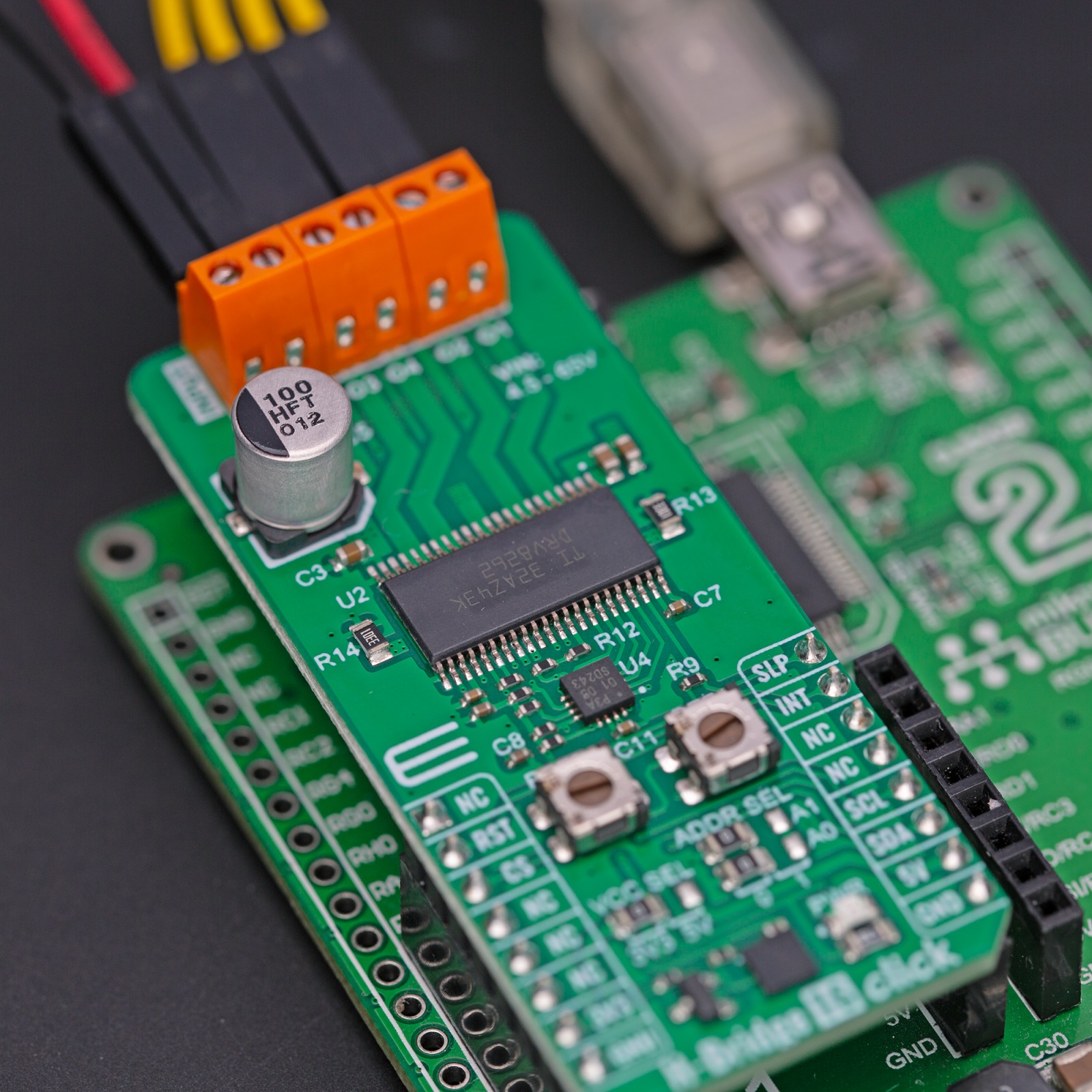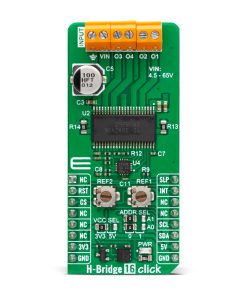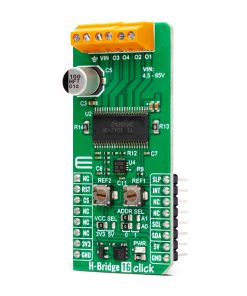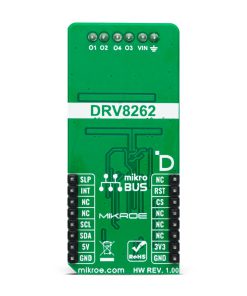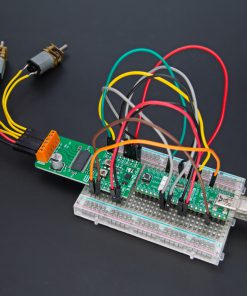Subtotal: R350.00
H-Bridge 16 Click
R645.00 ex. VAT
H-Bridge 16 Click is a compact add-on board with an H-Bridge gate driver, also known as a full-bridge pre-driver. This board features the DRV8262, a dual H-Bridge motor driver from Texas Instruments. The motor driver is designed for a variety of industrial applications and can drive one or two brushed DC motors, one stepper motor, and one or two thermoelectric coolers (TEC). It can operate in a wide supply voltage range of 4.5V to 65V. This Click board™ makes the perfect solution for the development of factory automation, medical equipment, robotics, TEC drivers, and more.
H-Bridge 16 Click is fully compatible with the mikroBUS™ socket and can be used on any host system supporting the mikroBUS™ standard. It comes with the mikroSDK open-source libraries, offering unparalleled flexibility for evaluation and customization. What sets this Click board™ apart is the groundbreaking ClickID feature, enabling your host system to seamlessly and automatically detect and identify this add-on board.
Stock: Lead-time applicable.
| 5+ | R612.75 |
| 10+ | R580.50 |
| 15+ | R548.25 |
| 20+ | R527.61 |

 Accel Click
Accel Click 